sagiebenaim / Distancegan
Programming Languages
Projects that are alternatives of or similar to Distancegan
DistanceGAN
Pytorch implementation of "One-Sided Unsupervised Domain Mapping" (arxiv). The implementation is based on the architectures of both DiscoGAN and CycleGAN.
Prerequisites
Distance Model based on DiscoGAN architecture
Download dataset
Download dataset [edges2shoes, edges2handbags, facecurb]: python datasets/download.py $DATASET_NAME. Use ./datasets/combine_A_and_B.py to create handbags2shoes dataset.
Download seperately: celebA dataset, car dataset used in Deep Visual Analogy-Making and head/face dataset. Then extract into ./datasets folder.
CelebA training (Male to Female, Blond to Black hair, With Eyeglasses to Without Eyeglasses)
Male to Female: python ./discogan_arch/distance_gan_model.py --task_name='celebA' --style_A='Male'
Blond to Black hair: python ./discogan_arch/distance_gan_model.py --task_name='celebA' --task_name='celebA' --style_A='Blond_Hair' --style_B='Black_Hair' --constraint='Male' --constraint_type=-1
Eyeglasses to Without Eyeglasses: python ./discogan_arch/distance_gan_model.py --task_name='celebA' --style_A='Eyeglasses' --constraint='Male' --constraint_type=1
Edges, Handbags and Shoes (Edges to Shoes, Edges to Handbags, Shoes to Handbags)
Edges to Shoes: python ./discogan_arch/distance_gan_model.py --task_name='edges2shoes' --num_layers=3
Edges to Handbags: python ./discogan_arch/distance_gan_model.py --task_name='edges2handbags' --num_layers=3
Shoes to Handbags: python ./discogan_arch/distance_gan_model.py --task_name='handbags2shoes' --starting_rate=0.5
Car, Head/Face (Car to Car, Car to Head/Face, Head/Face to Head/Face)
Car to Car: python ./discogan_arch/distance_gan_angle_pairing_model.py --task_name='car2car'
Head/Face to Head/Face: python ./discogan_arch/distance_gan_angle_pairing_model.py --task_name='face2face'
Car to Head/Face: python ./discogan_arch/distance_gan_angle_pairing_model.py --task_no ame='car2face'
Options
Add following flags to python command as follows:
To train from A to B only: --model_arch=distance_A_to_B. To train from B to A only: --model_arch=distance_B_to_A.
To add reconstruction/cycle loss to distance loss: --use_reconst_loss.
To use self distance instead of regular distance:--use_self_distance.
To avoid normalizing distances: --unnormalized_distances.
To change number of items used for expectation and std calculation: --max_items=NUM.
Additional options can be found in ./discogan_arch/discogan_arch_options/options.py
Sample Results
Male to Female (First row is input and Second row is output):
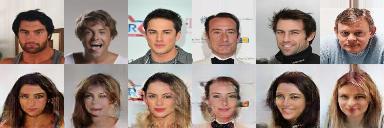
Blond to Black Hair:
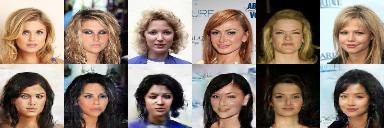
With to Without Eyeglasses:
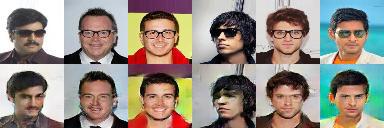
Edges to Shoes:

Shoes to Edges:
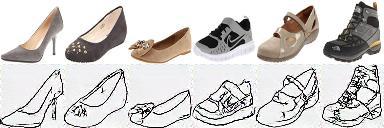
Handbags to Shoes:

Car to Car:

Car to Head:

Distance Model based on CycleGAN architecture
Horse to Zebra:
Dataset: python datasets/download.py horse2zebra
Train: python train.py --dataroot ./datasets/horse2zebra --name horse2zebra_distancegan --model distance_gan
Test: python test.py --dataroot ./datasets/horse2zebra --name horse2zebra_distancegan --model distance_gan --phase test
Results saved in ./results/horse2zebra_distancegan/latest_test/index.html. Loss results and plots: 'run python -m visdom.server' and navigate to http://localhost:8097 (For other options see pytorch-CycleGAN-and-pix2pix)
Options:
To train from A to B only: --A_to_B.
To train from B to A only: --B_to_A.
To add reconstruction/cycle loss to distance loss: --use_cycle_loss.
To change weights of distance loss: --lambda_distance_A=NUM, --lambda_distance_B=NUM.
--use_self_distance, --unnormalized_distances, --max-items=NUM are as above.
Additional options can be found in ./cyclegan_arch/cyclegan_based_options.
MNIST to SVHN:
python ./cyclegan_arch/mnist_to_svhn/main.py --use_distance_loss=True --use_reconst_loss=False --use_self_distance=False
Change above flags as required.
Sample Results
Horse to Zebra:
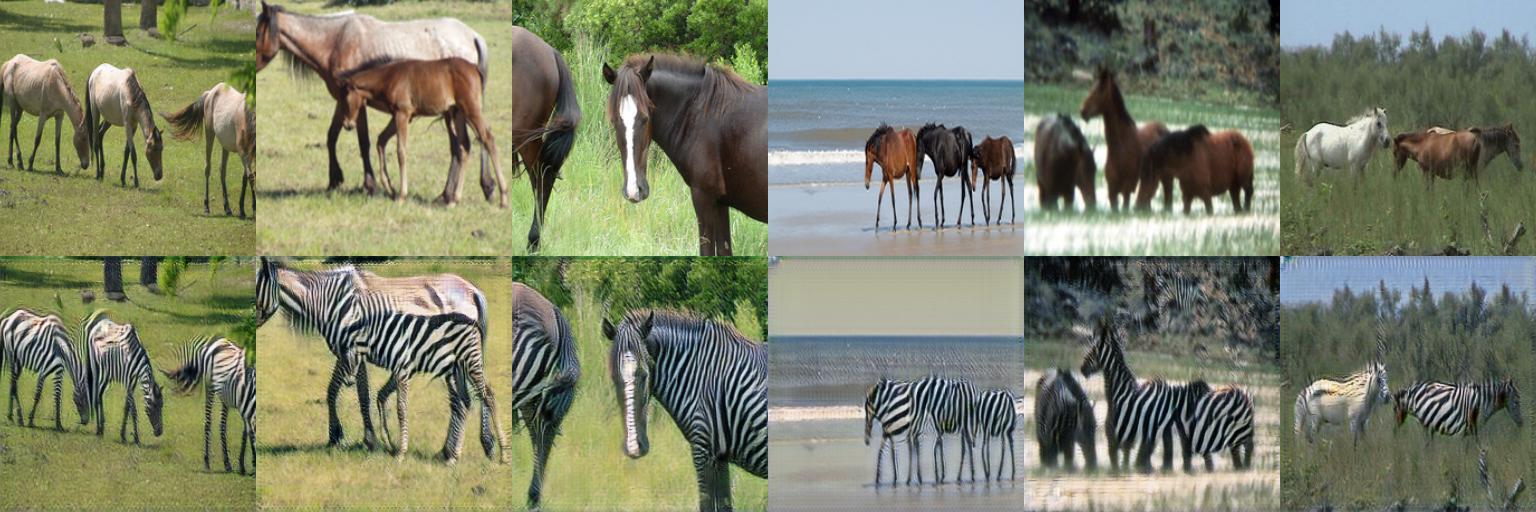
SVHN to MNIST:
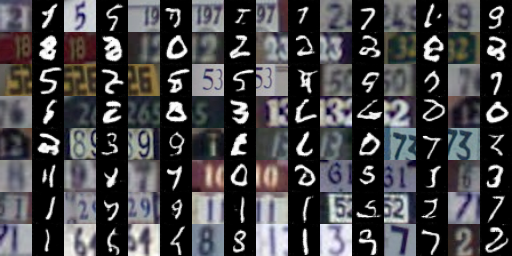
Reference
If you found this code useful, please cite the following paper:
@inproceedings{Benaim2017OneSidedUD,
title={One-Sided Unsupervised Domain Mapping},
author={Sagie Benaim and Lior Wolf},
booktitle={NIPS},
year={2017}
}
Acknowledgements
This project has received funding from the European Research Council (ERC) under the European Union's Horizon 2020 research and innovation programme (grant ERC CoG 725974).
